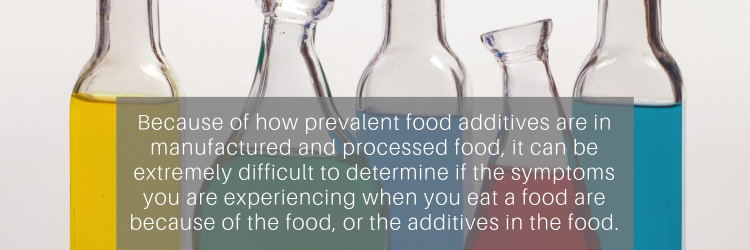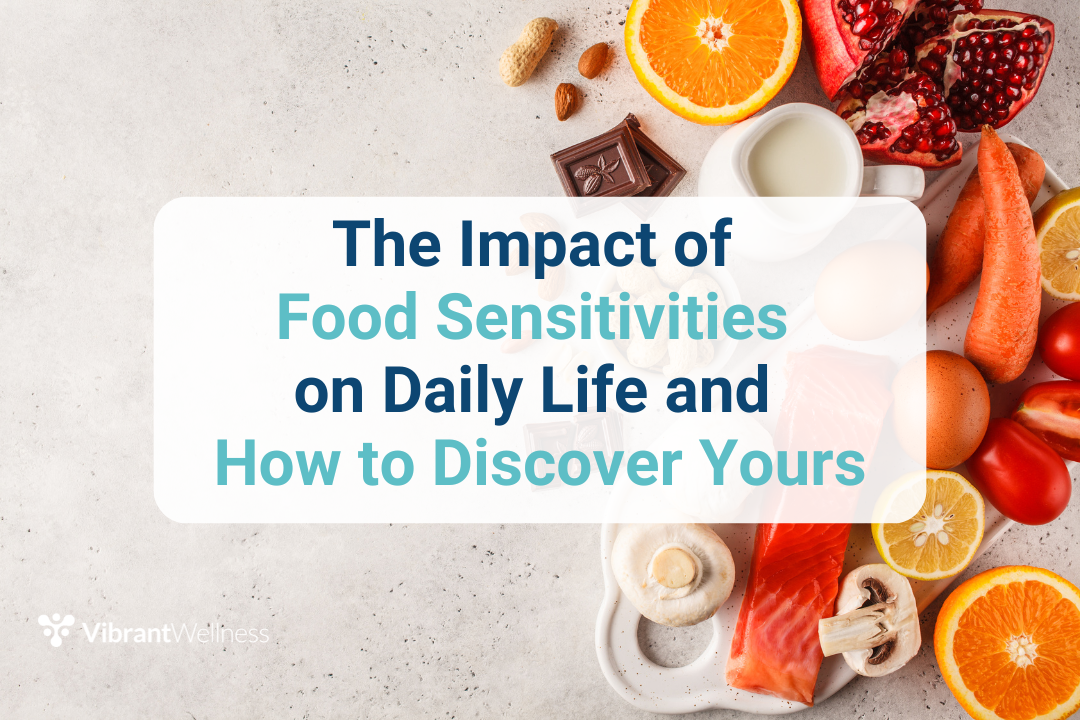Are Food Additives a Root Cause of Your Sensitivity?
Food additives are increasingly used in manufactured food to preserve it, color or dye it, flavor it, improve its texture, make it more shelf-stable, enhance its appearance, or prevent pests from consuming it.
Because of how prevalent food additives are in manufactured and processed food, it can be extremely difficult to determine if the symptoms you are experiencing when you eat a food are because of the food, or the additives in the food.
Symptoms of sensitivities to food additives include:
- Gas and bloating
- Fatigue
- Abdominal pain or cramping
- Diarrhea or constipation
- Headaches
- Brain fog
- Rashes, such as eczema
- Nausea and vomiting
- Skin itchiness and redness
- Bronchitis and asthma-like symptoms
- Musculoskeletal joint pain
- Muscle or joint stiffness and swelling
- Neurological symptoms such as tingling or numbness
Using an antibody-based food additives test can help prioritize the necessary foods to eliminate, avoid, or rotate and create a customized diet plan around your specific needs.

Food additives can be added to a food at any point in the process of growth to consumption, and many are considered generally recognized as safe (GRAS) by the FDA.
However, in some susceptible individuals, the immune system becomes provoked and over-reactive to common and otherwise non-reactive foods and additives in those foods.
This could be because of disturbance to the gut microbiome, infections, toxic exposures in the environment, and even stress, which can alter immune response.
Why Test Food Additives?
Food Additives testing can be very useful to help determine the true cause of the sensitivity and to help prioritize an elimination or rotation diet.
Usually removing foods containing additives that the body has produced antibodies to will alleviate symptoms, because the source of inflammation is removed.

Symptoms that appear when consuming a food with multiple ingredients can be due to a sensitivity to the food, or to the ingredients or additives in the food.
The ideal time course for elimination is not established. Consider magnitude of antibody response, ½ life of antibodies, patient’s current dietary intake, level of motivation, status of mucosal integrity, and remission and/or progression of symptoms.
What does the Vibrant Food Additives test include?
Vibrant tests for both IgG and IgA antibodies to 57 different food additives:

Elements
- Fluoride
- Nickel Sulfate
- Titanium dioxide
Emulsifiers and Surfactants
- Lecithin (Soy)
- Lecithin (Egg yolk)
- Polysorbate 80
Flavor Enhancers
- Monosodium Glutamate (MSG)
- Ammonium Chloride
- Sodium Citrate
Fibrous Additives
- Ispaghula / Psyllium Husk
Food Dyes and Pigments
- Acid Blue #3 (Patent Blue V)
- Acid Red #14 (Carmoisine)
- Annatto
- Beta-Carotene
- Blue #1 (Brilliant Blue)
- Blue #2 (Indigo Carmine)
- Brilliant Black=
- Cochineal Extract
- Green #3 (Fast Green)
- Red #2 (Amaranth Red)
- Red #3 (Erythrosine)
- Red #4 (Carmine)
- Red #40 (Allura Red)
- Yellow #5 (Tartrazine)
- Yellow #6 (Sunset Yellow)
Gums and Thickening Agents
- Gum Arabic
- Guar Gum
- Gum Tragacanth
- Locust Bean Gum
- Mastic Gum
- Xanthan Gum
- Beta-Glucan
- Carrageenan
- Cottonseed
Pesticides
- Deltamethrin
- Glyphosate
Preservatives and Antioxidants
- Benzoic Acid
- Butylated Hydroxyanisole (BHA)
- Butylated Hydroxytoluene (BHT)
- Citric Acid
- Sodium Sulfite
- Sorbic Acid
- Formaldehyde
- Sodium Benzoate
- Sodium Nitrate
Sweeteners
- Acesulfame K
- Aspartame
- Erythritol
- Mannitol
- Monk fruit
- Saccharin
- Sorbitol
- Stevia
- Sucralose (Splenda)
- Xylitol
Other
- Latex
- Bisphenol A (BPA)
Testing for food additive sensitivities can provide the most complete picture of total problematic foods and ingredients when run alongside a Vibrant 96, 84, or 180 Food Sensitivity panel.


